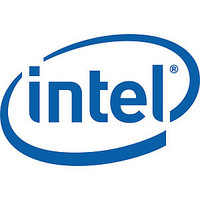CD2231 Intel Corporation, CD2231 Datasheet - Page 19

CD2231
Manufacturer Part Number
CD2231
Description
CD2231 Intelligent Two-channel Lan And Wan Communications Controller
Manufacturer
Intel Corporation
Datasheet
1.CD2231.pdf
(178 pages)
- Current page: 19 of 178
- Download datasheet (3Mb)
Datasheet
TXCOUT/DTR*
RXCOUT[0–1]
BYTESWAP
RXCIN[0–1]
TXCIN[0–1]
DSR*[0–1]
CTS*[0–1]
Table 1. Pin Descriptions (Sheet 3 of 3)
RXD[0–1]
TXD[0–1]
CD*[0–1]
EP[1–12]
Symbol
[0–1]
GND
N/C
V
DD
2, 20, 62, 70,
8, 45, 79, 96
37, 41, 42,
47, 64, 65,
18, 22, 36,
38, 49–52,
61, 63, 66,
Number
55, 59
25, 32
54, 58
85, 11
44, 48
43, 46
53, 57
39, 40
34, 35
68, 69
Intelligent Two-Channel LAN and WAN Communications Controller — CD2231
Pin
31
67
99
Type
O
O
O
–
–
–
I
I
I
I
I
I
I
I
TRANSMIT CLOCK OUT/DATA TERMINAL READY* [0–1]: This output can
be controlled automatically by the CD2231 to indicate a programmable
threshold has been reached in the receive FIFO. It can also be programmed to
output the transmit data clock. Following reset, this pin is high and stays high in
Clock mode until the transmit channel is enabled for the first time; after which it
remains active, independent of the state of the transmit enable. In all modes,
the clock transitions every bit time, even during idle fill in Asynchronous mode.
Data transitions are made on the negative-going edge of TXCOUT.
RECEIVE CLOCK OUT [0–1]: This output provides a one-time bit rate clock for
the receive data in all modes, except when an input (RXCIN) one-time receive
clock is used. After reset, this pin is low until the channel is receive enabled for
the first time, after which it remains active, independent of the state of receive
enable. When in Asynchronous mode, the output only transitions while receiving
data and not during inter-character fill. The receive data is sampled on the
positive-going edge of this clock.
CLEAR TO SEND* [0–1]: This input can be programmed to control the flow of
transmit data, for out-of-band flow control applications.
CARRIER DETECT* [0–1]: This pin is always visible in the MSVR register. On
the CD2231, these functions are separated onto two pins. When used as CD*,
this input can be programmed to validate receive data.
TRANSMIT CLOCK [0–1]: This pin inputs the transmit clock to the bit rate
generator.
RECEIVE CLOCK [0–1]: This pin inputs the receive clock to the bit rate
generator.
DATA SET READY* [0–1]: On the CD2231, these functions are separated onto
two pins. When used as DSR*, this input can be programmed to validate
receive data.
TRANSMIT DATA [0–1]: Serial data output for each channel.
RECEIVE DATA [0–1]: Serial data input for each channel.
BYTESWAP: This pin alters the byte ordering of data during certain 16-bit
transfers and changes the half of the data bus on which byte transfers are made
to comply with Intel
alter the bus handshake signals. When the BYTESWAP pin is high, the byte of
A/D[0–7] precedes that of A/D[8–15] in a string of transmit or receive bytes;
when BYTESWAP is low, A/D[8–15] precedes A/D[0–7].
When the BYTESWAP pin is high, bytes are transferred on A/D[0–7] when A[0]
is low, and on A/D[8–15] when A[0] is high. When BYTESWAP is low, bytes are
transferred on A/D[8–15] when A[0] is low, and A/D[0–7] when A[0] is high. A
different register map is used, depending on the state of this pin.
Byteswap Byte Alignment
NO CONNECTION: Make no connections to these pins. They must be left open
for proper device operation.
EXTERNAL PULL-UP [1–12]: These pins must be terminated to V
resistors for proper device operation. A value of 4.7 k
POWER
GROUND
0
1
Motorola
Intel
or Motorola
Description
processor systems. BYTESWAP does not
is recommended.
CC
by pull-up
19
Related parts for CD2231
Image
Part Number
Description
Manufacturer
Datasheet
Request
R

Part Number:
Description:
CD-ROM, DVD Multimedia IC
Manufacturer:
China Hua Jing Electronics Group Co.

Part Number:
Description:
Cd-rom
Manufacturer:
ROHM Electronics
Datasheet:

Part Number:
Description:
CD-ROM spindle motor driver
Manufacturer:
Rohm
Datasheet:

Part Number:
Description:
CD Digital Signal Processor
Manufacturer:
Silan
Datasheet:

Part Number:
Description:
CD Digital Servo Signal Processor
Manufacturer:
Silan
Datasheet:

Part Number:
Description:
CD Digital Signal Processor
Manufacturer:
Silan
Datasheet:

Part Number:
Description:
CD Servo Controller
Manufacturer:
Silan
Datasheet:

Part Number:
Description:
Cd Electronic Shockproof Controller
Manufacturer:
Silan
Datasheet:

Part Number:
Description:
Cd Servo Controller With Mcu With Interface Supporting Sc9831 Wma/mp3 Encoding/decoding
Manufacturer:
Silan
Datasheet:

Part Number:
Description:
Cd Digital Servo Signal Processor Slave Mode
Manufacturer:
Silan
Datasheet:

Part Number:
Description:
Cd Digital Servo Signal Processor With Mcu 2/4 Digits Lcd Display And Remote Control
Manufacturer:
Silan
Datasheet:










